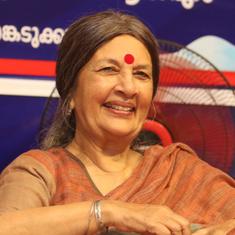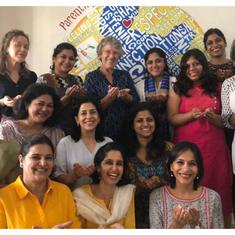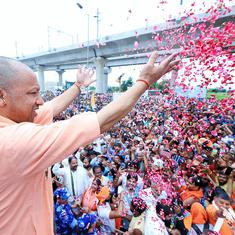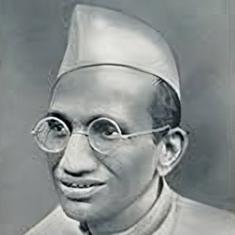Bangladesh is fresh from co-hosting a major regional conference related to the Indian Ocean region – in which India has for several years attempted to stress both etymology and policy.
The originators of the conference, held over May 12 to 13 in Dhaka, is the India Foundation, a think-tank transparently close to that country’s current establishment. This was the sixth iteration in the Foundation’s Indian Ocean Conference series that has earlier travelled to Singapore, Colombo, Hanoi, Male, and Abu Dhabi. As with these earlier conferences, India’s foreign ministry was the prime sponsor.
Top officials at India Foundation have deep links with the Rashtriya Swayamsevak Sangh, the ideological core of India’s Hindu nationalist ultra-right. Some foundation officials are current or former Members of Parliament of the ruling dispensation. A founder and high official of India Foundation is the son of that country’s national security advisor and a prime mover of foreign policy. The conference filled a few Dhaka hotels, the Intercontinental and Holiday Inn among them, with leaders and fixers from India’s resident and overseas “saffron” establishment alongside government officials: Politicians, career diplomats, and technocrats.
The symbiosis of India’s reigning church and state, as it were, was on display in Dhaka. When mixed with those from the so-called India Ocean Rim, Asia-Pacific and G-7 countries invited – vetted – at the pleasure of India’s foreign policy and one of its outsourced agencies, the programme resembled a runaway holy cow in a stacked China shop.
The intention was crystal.
Bangladesh | External Affairs Minister Dr S. Jaishankar & Bangladesh PM Sheikh Hasina attend the inaugural session of the 6th Indian Ocean Conference in Dhaka. pic.twitter.com/7fwj7mq0qM
— ANI (@ANI) May 12, 2023
That is not in itself unusual for India – or in any way awkward for Bangladesh. A country tends to work with another country irrespective of who is in power, for the purpose of national interest. Bangladesh has done so assiduously and effectively with India – the same as it has with China and a couple of dozen countries across the world crucial for its economic and geo-political wellbeing (indeed, there have been China-led gatherings in Dhaka and in any other capital of a country in which Beijing retains an abiding interest).
Besides, an upswing in Bangladesh-India relations, from people contacts to trade and transshipment, began during the Congress-led United Progressive Alliance government from 2004 onwards. It has deepened and expanded in the decade since 2014, when the Bharatiya Janata Party-led National Democratic Alliance government took office.
As the several bilateral and sideshow meetings during the span of the conference showed, Bangladesh also took every advantage of the presence of officials from countries besides India present at the conference – United States, Singapore, Australia, UAE, Oman, Japan, Maldives, Sri Lanka, Bhutan, among others – to ensure foreign policy desserts for itself at an Indian banquet.
The issues arise when professed regional cooperation gives way to a relationship of controller-state and client-state, an uneasy network of regional ryots or raiyats within a subcontinental zamindari. Or, for that matter, by being regional peons to a Middle Kingdom of this age.
This is not an abstraction, but an occupational hazard for any country caught in the grand tides and maelstroms of Asian and South Asian security. Sri Lanka is firmly in this grip – and has been so for close to two decades. Nearly every policy twitch there is seen through this lens by both India and China. Maldives is in the danger of being swamped by such geo-political tides as emphatically it is by the knock-on effect of rising ocean waters. Bhutan has recently gone resolutely silent on matters concerning India and, certainly, China, including contentious developments on its northern borders with China.
"Defence Minister Rajnath Singh arrives on an official visit to the Maldives, on the invitation of his Maldivian counterpart Defence Minister of Maldives, Mariya Didi," tweets Maldives Defence Ministry pic.twitter.com/BYZyNPa9Zj
— ANI (@ANI) May 1, 2023
Plain-speaking Nepal continues to be in political and intellectual uproar, as ever calibrating just how much is too much when it comes to India and China. On a recent visit to that country, I heard typical concern about a range of matters, from India’s Hindu-nationalist net extending itself along Nepal’s southern borders with India – the Madhes region – to India pressuring Nepal for deals to favour Indian companies for several thousand megawatts of hydropower projects, including one which could directly benefit Bangladesh.
In any case there are still enough observers and practitioners among Nepal’s political, policymaking and media circles who sharply recall India’s great interest in the exercise to promulgate Nepal’s new Constitution in 2015, ostensibly to aid those of “Indian origin” in Madhes. There was also a resultant months-long economic blockade along the southern border from September of that year that brought Nepal, already shattered by a devastating earthquake in April 2015, to its bleeding knees.
India sat back, denying a hand in the blockade. Meanwhile, some retired Indian diplomats railed against Nepal on network news. These are not salutary memories for Nepal.
A good first meeting with FM N.P. Saud of Nepal. Congratulated him on his new responsibility.
— Dr. S. Jaishankar (@DrSJaishankar) May 12, 2023
Discussed further steps in our steadily expanding partnership. Spoke about energy, connectivity, and our enduring people to people ties. pic.twitter.com/D6w2mAtUDp
I shared these and other concerns on the eve of the Indian Ocean Conference at the Holiday Inn in Dhaka, where most of the Indian fixers and policy-bots, if you will, were staying. The master class was ensconced at the Intercontinental, the venue of the conference, not too far away. I had gone to meet a few colleagues from Indian think-tanks, but ended up being buttonholed by a self-professed mover and shaker from India’s ultra-right policy netherworld. He had done this-and-that in “America” for India’s leadership, he said.
He would, next month, bring to Mauritius a wolf-pack of India’s economic policy czars. And now there was the Dhaka agenda. So much to do.
We talked as he chomped down a fat slice of fried ilish after an order of chicken tikka, a decent enough culinary bilateral. After enquiries as to business opportunities to mass-market ilish in India – I assured him ilish was already an effective bilateral tool alongside a handsome, if emotional trade quotient – the fixer spoke of the core, ongoing purpose behind the conference: Continue to establish bulwarks against China; and secure India’s borders by securing Bangladesh against every manner of implosion and explosion in a range from political to demographic. Bangladesh was among nine countries in IOR (the Indian Ocean Region) that the Indian establishment had identified as a focus.
But to work it, the Indian establishment’s attitude will need to firmly transition from a zero-sum game to win-win, here and regionally. This ranges from actual policy to toning down rhetoric against particular religions, communities and countries. Bangladesh, Nepal, Sri Lanka, and several other countries of South Asia don’t need to prove themselves to India, or to China for that matter. It’s the other way round.
Zamindaris are now multipolar. And the land belongs to the tiller.
Sudeep Chakravarti is Director, Center for South Asian Studies at University of Liberal Arts Bangladesh. He has authored several books on history, ethnography, conflict resolution, and Eastern South Asia. His most recent book is The Eastern Gate: War and Peace in Nagaland, Manipur and India’s Far East (Simon and Schuster).
This article was first published on Dhaka Tribune.










